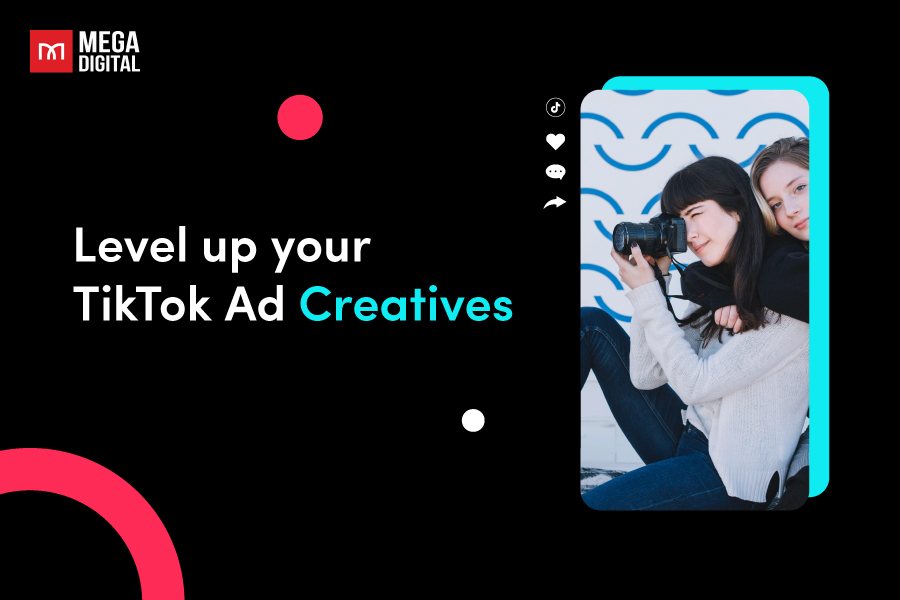Among the key metrics that advertisers closely monitor, impressions on Google Ads stand out as a fundamental indicator of campaign performance. In this comprehensive guide, we’ll delve into the significance of impressions in the context of Google Ads, explore strategies to optimize them, and provide actionable insights for maximizing your advertising impact.
What are Impressions on Google Ads?
An impression in Google Ads is recorded whenever your advertisement is displayed on a search results page or any other website within the Google Network. This implies that an impression is counted each time your ad appears in response to a search query on Google, its networks, or partner sites.
Sometimes, only a portion of your ad might be visible, such as on Google Maps. Essentially, the number of impressions equates to the number of times your ad has been displayed.
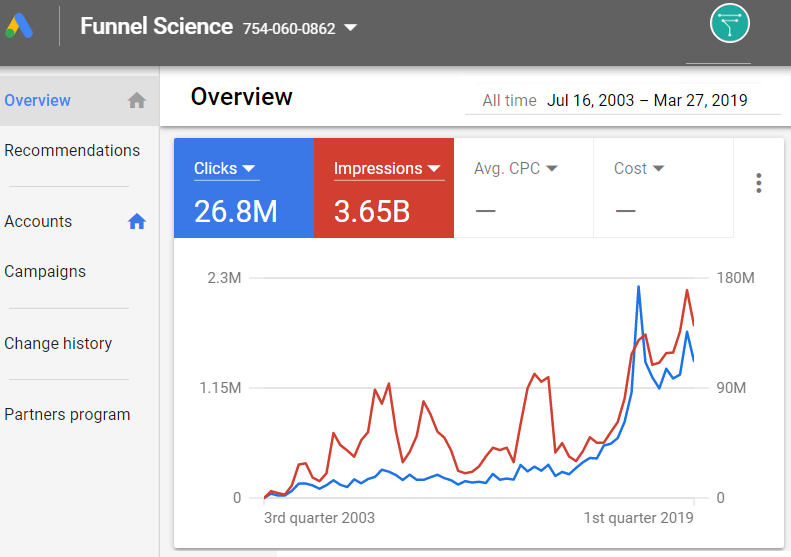
Understanding Google Ads impressions involves closely tracking “impression share”, which indicates the percentage of times your ads are displayed compared to the total opportunities. A high impression share means your ads are visible frequently, reaching a larger audience, while a low share suggests missed opportunities for visibility, impacting your ad effectiveness.
Considering professional Google Ads management services can streamline your campaign’s performance and maximize impression share effortlessly.
How to check the number of impressions on Google Ads?
Here’s how to access detailed impressions for your Google Ads:
- Sign in to your Google Ads account.
- Navigate to the “Campaigns” tab.
- Choose the campaign you wish to review.
- Click on the “Performance” tab.
- In the “Performance” tab, you’ll find various metrics related to your ad performance, including impressions. You may occasionally encounter the abbreviation “Impr”, which represents the number of impressions recorded for your advertisement.

>>> Read more: Why Google Ads Approved but No Impressions? How to Fix?
Why Do Impressions Matter?
Visibility and Reach
Impressions are your virtual footprints across the digital landscape. They represent the number of times your ad has been presented to users.
Think of impressions as the billboard views—each view contributes to your brand’s visibility and extends your reach to a broader audience.
While not all impressions lead to clicks or conversions, they play a crucial role in building awareness and establishing your brand’s presence.
Relevance and Demand
When your ad appears in search results or on relevant websites, it signifies relevance to what users are actively seeking.
Analyzing impressions provides insights into the demand for your product or service. High impressions suggest a healthy market interest.
By monitoring impressions, you can fine-tune your targeting and align your ads with user intent.
Foundation for Other Metrics
Impressions serve as the bedrock for other essential metrics:
- Click-Through Rate (CTR): Divide the number of clicks by the number of impressions to calculate CTR. It measures how many users who saw your ad actually clicked on it.
- Conversion Rate (CVR): While impressions alone don’t guarantee conversions, they set the stage for subsequent actions.
Without impressions, you’re navigating blindfolded—unable to gauge the effectiveness of your ad copy, targeting, or creative elements.
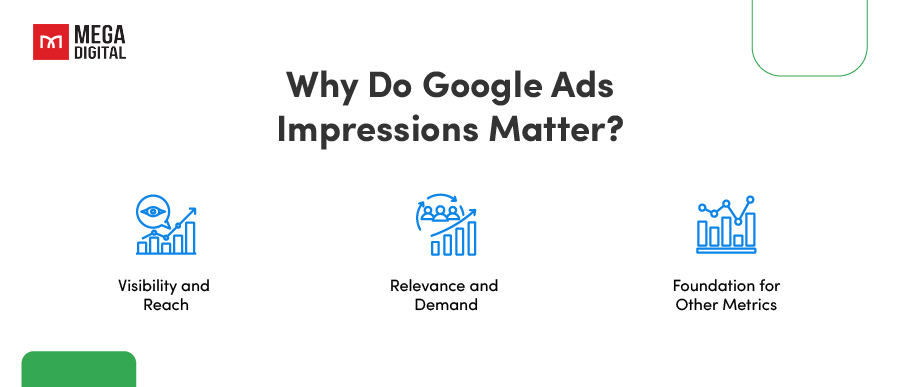
How Does Google Ads Calculate Impressions?
Impressions are counted whenever your ad enters the auction, regardless of whether it’s clicked or not. Here’s how Google Ads calculates impressions:
Search Network
An impression is counted each time your ad is shown on a search results page in response to a user’s query. This includes both the main search results page and other Google search pages like Google Images or Google Maps.
Display Network
Google Ads calculates impressions each time your ad appears on a website that is part of the Google Display Network. This includes websites, apps, and videos where your ad may be displayed to users based on their interests, demographics, or browsing behavior.
Video Campaigns
For video campaigns on platforms like YouTube, an impression is counted each time your video ad is shown to a user. This includes both skippable and non-skippable video ads that are displayed before, during, or after a video.
Shopping Campaigns
Impressions are counted each time your product listing ad is shown to a user in response to a relevant search query on Google.
Gmail Ads
Impressions for Gmail ads are counted each time your ad is displayed in a user’s Gmail inbox. This includes both expanded ads at the top of the inbox and collapsed ads in the Promotions tab.
What are Good/Bad Google Ads Impressions?
Good impressions are those that result in meaningful engagement and contribute to achieving your advertising goals. They indicate that your ads are being seen by your target audience and generating interest, clicks, conversions, or other desired actions.
Therefore, what quantity of impressions should you observe as good Google Ads impressions? Ideally, we advise aiming for a minimum of 15 clicks daily per ad group (not campaign) and a monthly total of at least 200-300 clicks on the keywords.
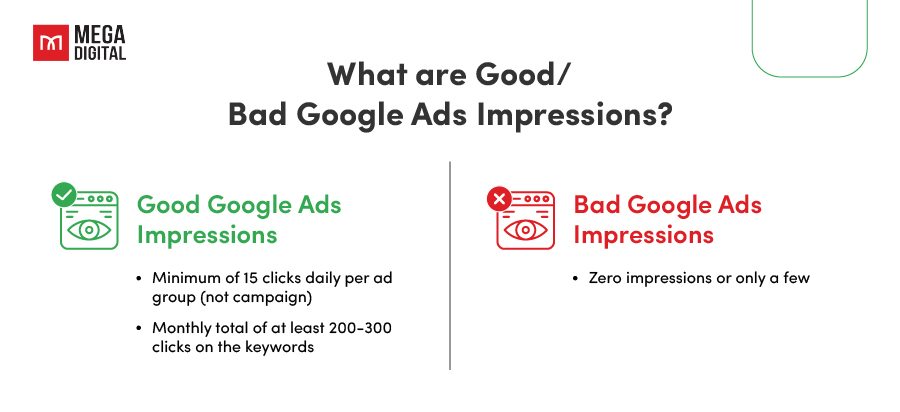
On the other hand, bad impressions on Google Ads are those that fail to attract attention or elicit any meaningful response from viewers. If your data analytics page shows zero impressions or only a few, it suggests that your ad is underperforming.
They may indicate that your ads are not effectively reaching your target audience, or that they are not compelling enough to generate interest or action.
In summary, good impressions lead to positive outcomes and contribute to the success of your advertising campaign, while bad impressions fail to deliver meaningful results and may indicate areas that require optimization or improvement.
How to Improve Impressions on Google Ads?
Improving Google Ads impressions involves several strategies aimed at increasing the visibility and relevance of your ads to your target audience. Here are some effective ways to improve impressions:
1. Select a target audience to concentrate on
You should have a clear understanding of your ideal target audience. Hint: They’re the individuals who engage most with your content.
Once you’ve identified which segment generates the highest impressions, prioritize attracting similar individuals to expand your audience. Begin by conducting further research to delve into their interests and preferences. This insight will aid in crafting content that resonates with them and draws them to your ad.
The most effective tool for researching your target audience is Google Analytics.
2. Refine your image
Now that you’ve identified your target audience and their preferences, it’s time to enhance your image to make it more appealing to them.
Here, “image” doesn’t refer to your literal photo or thumbnails but rather to your online persona that your audience encounters when viewing your content.
Are you humorous? Serious? Authoritative?
The most effective way to determine the tone you should adopt is by analyzing your past content. Examine your top-performing content to identify its theme and personality. Compare this to your less successful content to ascertain any significant differences.
Once you’ve identified the image you want to project, refine it and ensure consistency.
For example, if your audience responds well to humor, incorporate more jokes and share memes. If you have a more authoritative and respectable image, avoid childish content and focus on mature topics.
Whatever the approach, ensure it aligns with the interests of your target audience.
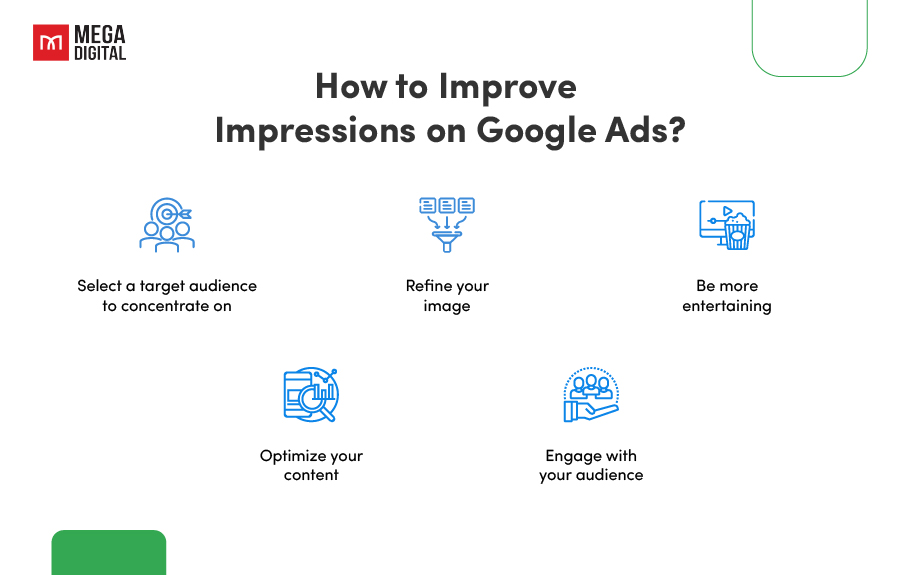
3. Be more entertaining
People consume content primarily for entertainment. Even when seeking educational content, they prefer it to be engaging and entertaining.
Therefore, when creating content, aim to evoke emotions from your audience. Whether it’s positive or negative, the key is to avoid being dull and uninteresting.
Boring content fails to captivate and does not drive impressions in Google Ads. Hence, prioritize creating content that resonates emotionally with your audience to enhance its impact.
4. Optimize your content
The types of content you share should also be optimized.
For example, let’s consider a company selling unique and quirky home decor items through Google Shopping Ads. If they decide to embrace a playful and unconventional persona, their ad listings may reflect this tone. They might use witty product descriptions or incorporate humorous imagery to catch the attention of potential buyers.
Just be sure to maintain consistency with the image you’re projecting.
5. Engage with your audience
Many individuals tend to be reserved, even if they enjoy your content, they might hesitate to interact.
That’s why it’s often advantageous to take the initiative and engage with them first. Consider prompting their feedback or opinions at the end of your Google Ads content. Additionally, offering incentives for engagement can further encourage audience interaction.
Furthermore, it’s crucial to be responsive when they do engage. Keeping the conversation flowing shows your dedication and prevents the disappointment of being left unanswered, a common frustration online.
By actively engaging with and cultivating relationships with your current audience, you not only foster further engagement but also increase the likelihood of your ads being shared. This ultimately contributes to boosting Google Ads impressions.
Frequently asked questions
Why do I get more impressions but nobody clicks on it?
This might suggest that your gig isn’t attractive enough to encourage viewers to click and learn more. This could be caused by factors like an unexciting thumbnail, an unconvincing gig description, or ineffective keyword optimization.
What’s the difference between impressions and engagement?
Impressions alone do not offer a comprehensive understanding of content effectiveness. There are various reasons why someone may view a piece of content, including accidental exposure.
This is where engagement metrics become invaluable.
Engagements encompass the interactions received from your audience, indicating how actively people have engaged with your content. These interactions include likes, comments, shares, saves, and other forms of engagement, revealing the extent to which people have actively consumed your content.
Moreover, engagements offer insights into audience sentiment. They reveal whether the audience liked or disagreed with the content, as well as whether they shared it with others or saved it for future reference.
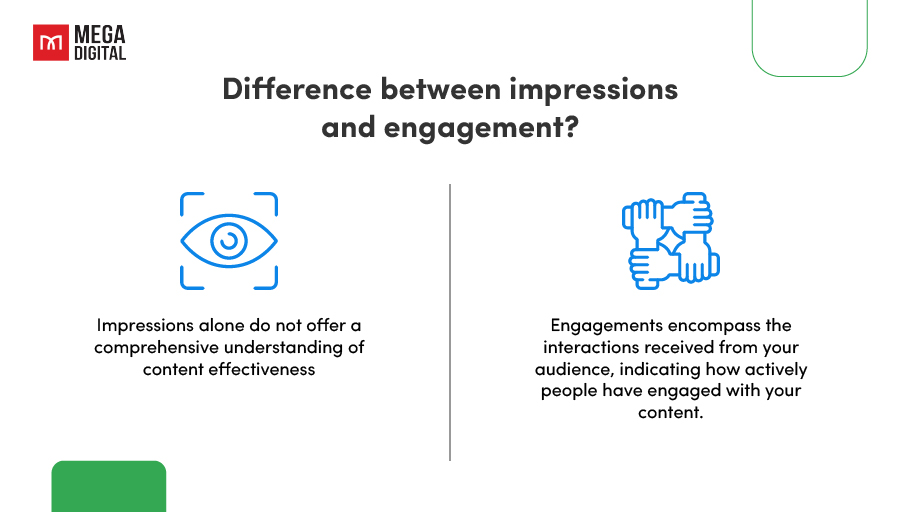
Am I charged for impressions in Google Ads?
Google Ads covers the costs for both clicks and impressions, with payment structures varying based on the campaign type. In search campaigns, advertisers incur charges for each click on their ad, whereas in display campaigns, they pay for every thousand impressions (views) of their ad.
What is the cost of 1000 impressions in Google Ads?
| COST PER 1000 IMPRESSIONS | % OF MARKETERS |
|---|---|
| Less than $0.50 | 19.15% |
| $0.51 – $1.00 | 25.53% |
| $1.01 – $2.00 | 12.77% |
| $2.01 – $3.00 | 4.26% |
| $3.01 – $5.00 | 2.13% |
| $5.01 – $7.00 | 17.02% |
| $7.01 – $10.00 | 4.26% |
| More than $10.00 | 14.89% |
Wrap up
Impressions on Google Ads are more than mere numbers—they represent your brand’s digital footprint. By optimizing impressions, you lay the groundwork for successful campaigns.
Remember these key takeaways:
- Impressions matter: They build awareness and extend your reach.
- Relevance drives success: Align impressions with user intent.
- Optimize strategically: Refine targeting, craft compelling ads, and monitor performance.
Impressions are the first step; engagement and conversions follow suit. So, keep an eye on those virtual billboards, refine your strategy, and watch your brand soar!






